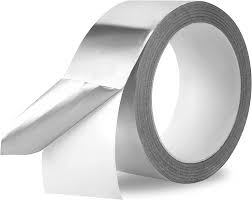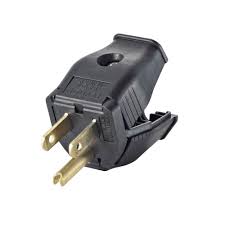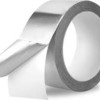I just purchased a new DM&IR diesel engine #20-030-022 from Atlas at a train show yesterday. Setting it up this morning the engine responded beautifully and all was fine until I entered my short tunnel area and the engine went dead after running it on more of the layout, the engine died in this short tunnel. Apparently this engine has a problem receiving signals, as all my other TMCC engines never had this problem. So now what do I do to fix this? I really do not want to return the engine nor have a display piece. Thanks for your help.
Replies sorted oldest to newest
GRJ had made a TMCC signal booster. He may still have one to sell. Should be the answer to your problem.
@Mark V. Spadaro posted:GRJ had made a TMCC signal booster. He may still have one to sell. Should be the answer to your problem.
No, the signal booster is not the answer to your problem. If only one of your engines has the issue why add something to the TMCC infrastructure that none of the rest of them need?
This is much simpler than that. It's an antenna or radio receiver problem in/on the locomotive. Send it back for warranty service.
Mike
I was wondering as a double check if I should run the engine in conventional to see that it goes thru the tunnel area. But right now, I can't get the engine to do so only wants the TMCC signal. Now what?
Turn off, or unplug, the power to your Command Base. This will force your engine to go into conventional mode.
Does it go into conventional with the Base powered off?
Mike
If you could remove the body to check on the placement of the antenna that would be a start - it may have dropped away from the plastic body, or some such.
But, if there is a warranty....well, that changes everything. Maybe you could exchange it, as the problem is almost (almost....) certainly this loco, as all your others run well, apparently.
But.....TMCC signals/antennas/etc are not all created equal. There could be a weak area in the tunnel (tunnels and over/under trackage can play heck with the ground plane, therefor the signal); the new loco may have a marginal antenna, so these 2 tolerances can bite each other.
Can the tunnel be moved temporarily? Are there accessories/track nearby?
This tunnel area is extremely hard to reach in and no way to do so without terribley tearing into the area. I may have found some of the problem or all of the problem. I will add that to another persons post.
@Mellow Hudson Mike posted:Turn off, or unplug, the power to your Command Base. This will force your engine to go into conventional mode.
Does it go into conventional with the Base powered off?
Mike
I did unplug the command base and the engine went into conventional. But the bell button on my Z4000 activated the whistle, and the whistle button activated the bell. ?? And in certain spots on the layout the horn blows on it's own. As for the tunnel problem, in conventional the engine had broken up power spots, I can only conclude I need to get in there and clean the track. I'll admit it hasn't been done by hand, only my old track cleaning car and a new different cleaning car, which looks like it may have not done a good enough job. Perhaps the roller spacing on this engine isn't helping. The engine does run fine in other spots in conventional and TMCC. So I have some work to do before we say it is the engine. Thanks for far for your ideas.
I had a similar problem with one of my engines. After searching the forum, one of the fixes I saw and used was getting some aluminum tape from an auto store. Then I soldered a wire to it which I connected to the Ground pole of a wall plug. After stringing the tape to the top of my overhang, I plugged it into the wall which made a new ground plane. The engine worked after that with no issues.
So you just need:
plus some wire. Just connect it to the ground pin the round one in the picture above.
Attachments
OK well noted. Interesting fix.
Is there any metal in the tunnel structure itself? Like chicken wire or steel screen?
Hal
Same engine, similar problem. Mine stops in the middle of 3 fastrack 036 switches and grumbles going over all other switched. If I set the speed at 15 steps it seems to pass over the troublesome spots on average of 4 out of 5 times. When it stops, it's as if it's dropping in to neutral.
I run using my MTH remote so... remote talks to TIU, TIU talks to TMCC, TMCC talks to engine. I can use the quick speed command feature of MTH to restart engine and proceeds merrily on.
Then when electro-whatever aligns again it stops. No regularity.
I've opened up my engine and had a look and nothing seems amiss. Any suggestions as to what I should see.
@Charly posted:Same engine, similar problem. Mine stops in the middle of 3 fastrack 036 switches and grumbles going over all other switched. If I set the speed at 15 steps it seems to pass over the troublesome spots on average of 4 out of 5 times. When it stops, it's as if it's dropping in to neutral.
I run using my MTH remote so... remote talks to TIU, TIU talks to TMCC, TMCC talks to engine. I can use the quick speed command feature of MTH to restart engine and proceeds merrily on.
Then when electro-whatever aligns again it stops. No regularity.
I've opened up my engine and had a look and nothing seems amiss. Any suggestions as to what I should see.
I have a set of Atlas locomotives that used to do this through some Ross switches and a double crossover. The solution (for me) was to replace the axles with blind drivers to the flanged ones.
My theory is that since the blind drivers had traction tires and the flanged replacements didn’t, that the locomotives were losing contact with ground. Since most of our 3-rail locomotives don’t have sprung drivers, if the rails aren’t perfectly level with each other, switches become the most apt place for electrons to stop flowing.
"My theory is that since the blind drivers had traction tires and the flanged replacements didn’t, that the locomotives were losing contact with ground. Since most of our 3-rail locomotives don’t have sprung drivers, if the rails aren’t perfectly level with each other, switches become the most apt place for electrons to stop flowing."
Interesting thought. I believe this engine has 4 tires per truck, unusual, but it is a light engine, relatively. Maybe just removing a pair of tires will help. We shall see ![]()
This is good to hear, that I am not the only one with this problem. It sounds like these units are going to have to go back to Atlas!! I hope you contact Atlas with the problem. In the meantime I was hoping to get the dealer to give me a replacement, now I wonder if I should just return it and hope for a full refund. Perhaps there will be others out there that can chime in, having the same problems.
Will momentary loss of TMCC signal stop the engine without shutting down the engine?
rplst8: Glad you stepped forward and mentioned these behavior problems. Looks like Atlas should be stepping up to the plate and help us!! There are problems here.
@Jeff B. Haertlein posted:rplst8: Glad you stepped forward and mentioned these behavior problems. Looks like Atlas should be stepping up to the plate and help us!! There are problems here.
To be clear, I don’t own these specific locomotives. My observations were of other locomotives I’ve owned. Specifically the Atlas SD35 that included a replaceable center wheel set with flanges and no traction tires. I’ve also seen different TMCC locos come to a stop when there is a momentary loss of signal on the rail.
Well... before I go digging into my engine I will attempt to talk with Atlas and see if a replaceable center wheel set with flanges and no traction tires is available. I have also noticed there is a slight difference in the trucks from front to rear so that might also play into changing the wheel sets. Also of note, is that the wheels are grooved to accept tires and that may/may not play into operations without tires. In order to reach Atlas I will need to wait until Monday, a business day, and I will be calling as a dealer, ![]() .
.
Appreciate all the information/suggestions presented here and will be posting my results from contacting Atlas when that info is available.
That is interesting about the trucks being different between the two. That is also something I forgot to mention as I did have the engine derail a couple of times. And I felt the one truck was hitting one of the slide switches underneath!!! So this difference in trucks could be why there was friction causing an occasional derail. I might add my main lines use all Gargraves pre-curved and I use 72;80;89 &96 curves!
As for changing out the wheel sets, it's interesting that Atlas, came up with a solution on that.
Also since you have been working with your engine, does your engine have a battery back up, or not? If it does, did the engine come with a battery? Also the instructions that I have really did not show how to get in to a/the battery compartment.
Most of my Atlas motors are two-rail, but the three-rail RSD 7-15 that I do have runs quite well in conventional without the battery. The battery seemed to have been for the engine shut-down sounds to complete after the power is shut off. After operating the 7/15 for a bit, I installed the battery and that was the effect that I noticed. Just a note, it has been quite a while since I did that.
EDIT: I did remove the battery after the operating session as it was going to be sometime until another; it has turned out to be over six years!
I can post pics of the trucks so you can see what the difference is. It seems minor but you never know.
As for a battery, I didn't see a place for it. Again pics will show best, will post some innards shots as well.
I will await pictures. Not being much of a diesel fan, I don't know if the real engines had two different trucks. I'll let the experts reply on the real engines.
Along the lines of what C&O Allan posted, my old layout has TMCC signal issues with some engines and I ran a small copper wire next to the track and tied it into the ground side of an electrical outlet and that worked wonders.
This is what the response from Atlas is...
Quote...
Our O scale technical consultant advised since these models were tooled up so long ago there are no diagrams nor separate wheel sets available. We haven’t heard of any radio contact issues with these units. If that issue persists please don’t hesitate to send the locomotive back for service.
End Quote.
I'll post pics Wed. am busy working a retail hobby shop presently. Regards to trucks, the differences are in mostly in the cover plate.
I have been talking with an ex Lionel repair buddy and we think the wheels can be swapped around within trucks to change the continuity of the trucks. He also suggested, in my situation, to tie the common rails in the switches around the derail gap on one side to enable the signal "halo" to be stronger.
Will update as they come...
The customer service at Atlas is top notch! A much more thoughtful reply than you'd get from the other two.
How can they say the tooling is long ago? Since new models have come out! I am starting to think my issue was more a dead spot than a signal issue, but not sure. I guess I can see about a return for a another engine, and then a return to Atlas. Certainly more than I care to do. Is it worth it?
Jeff,
Why would you return it? Just do the ground fix that I did and that should fix the issue (and it costs less than shipping the engine back). Just curious.
Also had a problem with the engine blasting it's horn in conventional as it ran over my layout. Sometimes most all the time.
Also feel there is a truck clearance problem with one of the slide switches in the underframe. My curves are 72, 80, 89 & 96 shouldn't be happening!
I'll check back as to your ground fix. Right now I have to leave this site,
I received my RSD 7/15 a couple of weeks ago and it runs extremely well which surprised me. Every Atlas engine I've owned prior to this one equipped with only 2 pickup rollers have given me power pickup problems. Lots of problems with stalling on switches and somewhat dirty track. None of this was due to signal/antenna issues.
Prior to this RSD7/15 I got a Trainman U23b. Same problem lots of stalling, however it had provisions to add two more pickup rollers which I added. Fixed the problem. Now the engine runs great. Same problem with an RS1, but I found a beater RS1 with 2 pickup rollers per truck. Swapped trucks and now the RS1 runs great.
The RSD 7/15 does not have provisions for additional rollers so adding them can't be done, but this engine doesn't have stalling issues. I imagine that's because the engine is so long that the spacing between the rollers is longer. For your engine I would give the pickup rollers and track a good cleaning and see if that helps first.
The forward and rear trucks on this model are different. The motor positions relative to the truck are different front to rear. The forward truck motor is mounted toward the rear of the truck. The rear truck motor is mounted toward the front of the truck. I'm guessing, to get the front truck motor to line up with the cab, the motor had to be shifted to the rear of the truck making it necessary to modify the design of the truck.
Ken
@kanawha posted:I received my RSD 7/15 a couple of weeks ago and it runs extremely well which surprised me. Every Atlas engine I've owned prior to this one equipped with only 2 pickup rollers have given me power pickup problems. Lots of problems with stalling on switches and somewhat dirty track. None of this was due to signal/antenna issues.
Prior to this RSD7/15 I got a Trainman U23b. Same problem lots of stalling, however it had provisions to add two more pickup rollers which I added. Fixed the problem. Now the engine runs great. Same problem with an RS1, but I found a beater RS1 with 2 pickup rollers per truck. Swapped trucks and now the RS1 runs great.
The RSD 7/15 does not have provisions for additional rollers so adding them can't be done, but this engine doesn't have stalling issues. I imagine that's because the engine is so long that the spacing between the rollers is longer. For your engine I would give the pickup rollers and track a good cleaning and see if that helps first.
The forward and rear trucks on this model are different. The motor positions relative to the truck are different front to rear. The forward truck motor is mounted toward the rear of the truck. The rear truck motor is mounted toward the front of the truck. I'm guessing, to get the front truck motor to line up with the cab, the motor had to be shifted to the rear of the truck making it necessary to modify the design of the truck.
Ken
Thanks Ken, some great info. My next day off is Wednesday, and I am planning to look into moving wheelsets around to see if that makes a difference in ground pickup. Fingers crossed.
For me, issue is not severe enough to give up on the engine. Just a tad annoying, lol.
You can try removing the traction tire from the blind driver. I had to do this on an atlas SD40 as it would rock back and forth on the center driver and loose ground. The tire actually made the center blind driver bigger than the end flanged drivers causing a teeter toter effect on track that was not perfect.
Thanks for these ideas. It is interesting to me that the tires are on blind wheels, guess I have never noticed that before on other engines; being this is my first Atlas engine. The other problems are:
Any problems with derailing trucks as if there is an obstruction, like say, one of the slide switches underneath? Also have we confirmed that these engines do not have a battery, much less any other electrical system, to prevent an engine from dying in a dead power section of track? And is this a grounding problem rather than a dead center rail issue, for lack of my giving a better description.
Thanks!








